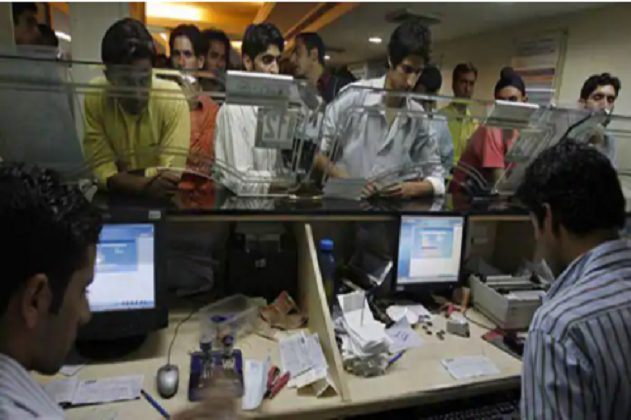Reserve Bank of India: At present, 90 percent people keep their earnings in banks because money in banks is considered safe. But it is not that the money kept in your bank account is completely safe because if the bank in which your money is kept goes bankrupt, then you will also have to suffer the consequences. Now the question is, which is the safest bank in the country or are all the government banks safe? RBI has given important information regarding this. Let us know which bank is the safest and if the bank collapses then how much money do you get back.
Safe Banks in India To Keep Money: People deposit their hard-earned money in the bank. They do this so that this money will be useful in difficult times. But sometimes it happens that the bank itself sinks. Then the account holders of that bank have nothing left in their hands except beating their heads.
For this reason, it is advisable that before handing over your earnings to someone, check whether the other bank is safe or not. The Central Bank (RBI) had released a list of Domestic Systemically Important Banks (D-SIBs) earlier this year. It includes the names of those banks of the country which are the safest.
Isn’t the condition of Indian banks like Silicon Valley Bank?
A list was released this year by RBI (Reserve Bank of India). That day the Reserve Bank had released a list telling you in which banks your money is safe and in which banks your money is not safe. You know that if even one big bank in a country collapses, it causes losses to the entire Indian economy. What the customers have to suffer is different.
Which banks are in the RBI list?
The names of one government and 2 private banks are included in the list of safest banks released by the Reserve Bank. In this the name of government sector State Bank of India (SBI) is there. Apart from this, 2 private sector banks are included in this list.
The names of HDFC Bank and ICICI Bank are among them. Meaning that even if your account is not in SBI (Government Bank) but in HDFC Bank or ICICI Bank, you still have no problem.
Which banks can come in this list
This list includes only those banks which are required to maintain additional Common Equity Tier 1 (CET1) in addition to the usual capital conservation buffer. According to RBI, State Bank of India (SBI ) will have to maintain an additional 0.6 percent CET1 as a percentage of their risk-weighted assets. Similarly, ICICI Bank and HDFC Bank need to maintain an additional 0.2 percent.
Reserve Bank keeps a close eye on these banks
RBI keeps a close watch on the banks which come in this list of the central bank. The Reserve Bank not only keeps an eye on the daily functioning of these banks, it also keeps a close watch on any big loan or account. Not only this, if the bank negotiates lending on any big project then it is also evaluated. It is seen whether this will have any negative impact on the overall business of the bank.
Since when is this list being released?
RBI has been releasing the list of such banks since 2015. The Reserve Bank believes that such banks are necessary for the country’s economy. Rating is also given to these banks by RBI. Only after this rating the list of these important banks is prepared. However, till now RBI has been able to include the names of only 3 banks in this list.
How much money do you get back if a bank collapses?
Do you know if a bank goes bankrupt and you have an account in it, how much money will you get back? If you are a bank customer, then you must know that if your bank defaults or goes bankrupt, you get an insurance cover of up to Rs 5 lakh on the money deposited in the bank. This amount is provided by Deposit Insurance and Credit Guarantee Corporation (DICGC).
DICGC is a company wholly owned by the Reserve Bank of India. It insures the banks of the country. Earlier, under this Act, in case of bank sinking or bankruptcy, an amount of up to Rs 1 lakh was given. But, the government has increased it to Rs 5 lakh. Foreign banks which have branches in India also come under this scope.
How many days does it take to get the money
In case a bank sinks or closes, DICGC collects all the information related to customers’ accounts within 45 days. After this investigation is done and the amount is given to the customer within the next 45 days. This entire process takes 90 days. That’s why experts say that more than Rs 5 lakh should not be kept in a bank account. You can keep your money in different banks so that in such a situation your earnings remain completely safe.


